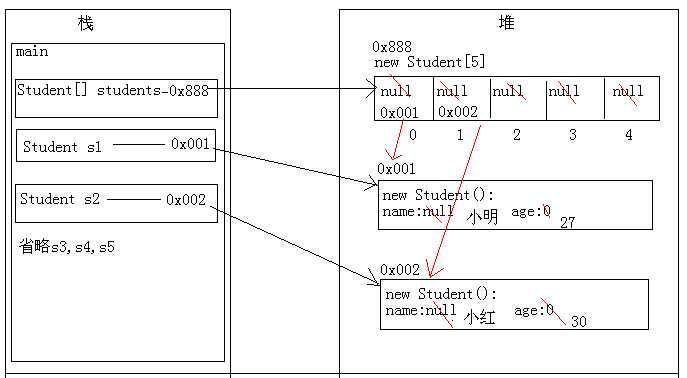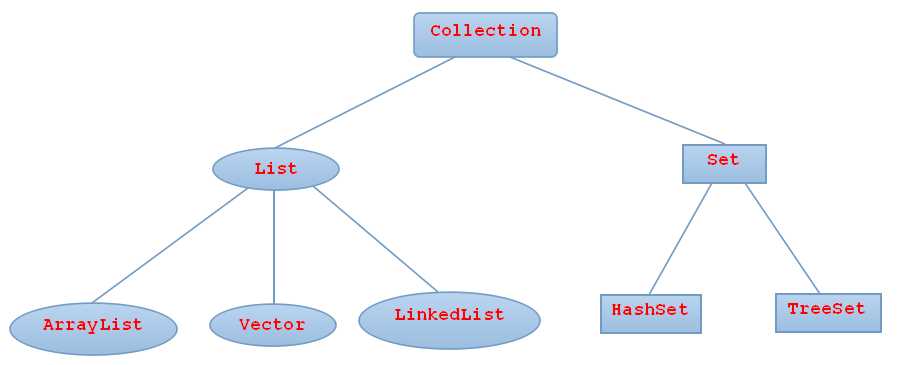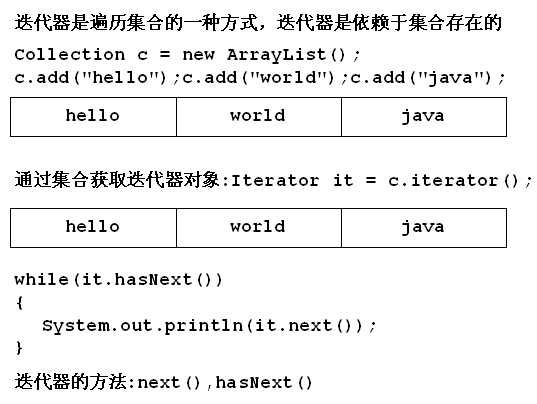标签:
15.01 对象数组的概述和使用
1 public class Student
2 {
3 // 成员变量
4 private String name;
5 private int age;
6
7 // 构造方法
8 public Student()
9 {
10 super();
11 }
12
13 public Student(String name, int age)
14 {
15 super();
16 this.name = name;
17 this.age = age;
18 }
19
20 // 成员方法
21 // getXxx()/setXxx()
22 public String getName()
23 {
24 return name;
25 }
26
27 public void setName(String name)
28 {
29 this.name = name;
30 }
31
32 public int getAge()
33 {
34 return age;
35 }
36
37 public void setAge(int age)
38 {
39 this.age = age;
40 }
41
42 @Override
43 public String toString()
44 {
45 return "Student [name=" + name + ", age=" + age + "]";
46 }
47 }
1 /**
2 把5个学生的信息存储到数组中,并遍历数组,获取得到每一个学生信息。
3 * 学生:Student
4 * 成员变量:name,age
5 * 构造方法:无参,带参
6 * 成员方法:getXxx()/setXxx()
7 * 分析:
8 * A:创建学生类。
9 * B:创建学生数组(对象数组)。
10 * C:创建5个学生对象,并赋值。
11 * D:把C步骤的元素,放到数组中。
12 * E:遍历学生数组。
13 * */
14
15 public class Practice
16 {
17 public static void main(String[] args)
18 {
19 // 创建学生数组(对象数组)。
20 Student[] students = new Student[5];
21 // for (int x = 0; x < students.length; x++)
22 // {
23 // System.out.println(students[x]);
24 // }
25 // System.out.println("---------------------");
26
27 // 创建5个学生对象,并赋值。
28 Student s1 = new Student("小明", 27);
29 Student s2 = new Student("小红", 30);
30 Student s3 = new Student("小强", 30);
31 Student s4 = new Student("旺财", 12);
32 Student s5 = new Student("张三", 35);
33
34 // 将对象放到数组中。
35 students[0] = s1;
36 students[1] = s2;
37 students[2] = s3;
38 students[3] = s4;
39 students[4] = s5;
40
41 // 遍历
42 for (int x = 0; x < students.length; x++)
43 {
44 //System.out.println(students[x]);
45 Student s = students[x];
46 System.out.println(s.getName()+"---"+s.getAge());
47 }
48 }
49 }
15.02 对象数组的内存图解

15.03 集合的由来及与数组的区别
集合类的由来:面向对象语言对事物的体现都是以对象的形式,所以为了方便对多个对象的操作,Java就提供了集合类。
数组和集合类同的区别:
数组可以存储同一种类型的基本数据也可以存储同一种类型的对象,但长度是固定的
集合只可以存储不同类型的对象,长度是可变的
集合类的特点:集合只用于存储对象,集合长度是可变的,集合可以存储不同类型的对象。
15.04 集合的继承体系图解
集合容器因为内部的数据结构不同,有多种具体容器,根据共性内容不断的向上抽取,就形成了集合框架。
框架的顶层Collection接口

15.05 Collection集合的功能概述
Collection 层次结构中的根接口。Collection 表示一组对象,这些对象也称为 collection 的元素。一些 collection 允许有重复的元素,而另一些则不允许。一些 collection 是有序的,而另一些则是无序的。JDK 不提供此接口的任何直接实现:它提供更具体的子接口(如 Set 和 List)实现。此接口通常用来传递 collection,并在需要最大普遍性的地方操作这些 collection。
15.06 Collection集合的基本功能测试
成员方法:
1. boolean add(E e):确保此 collection 包含指定的元素(可选操作)。
2. boolean remove(Object o):从此 collection 中移除指定元素的单个实例,如果存在的话(可选操作)。
3. void clear():移除此 collection 中的所有元素(可选操作)。
4. boolean contains(Object o):如果此 collection 包含指定的元素,则返回 true。
5. boolean isEmpty():如果此 collection 不包含元素,则返回 true。
6. int size():返回此 collection 中的元素数。
例:
1 // 创建集合对象
2 // Collection c = new Collection(); //错误,因为接口不能实例化
3 Collection c = new ArrayList();
4 c.add("hello");
5 c.add("world");
6 c.add("java");
7 // c.clear();//移除所有元素
8 // System.out.println("remove:" + c.remove("hello"));//移除一个元素
9 // System.out.println("remove:" + c.remove("javaee"));
10 // 判断集合中是否包含指定的元素
11 System.out.println("contains:"+c.contains("hello"));//contains:true
12 System.out.println("contains:"+c.contains("android"));//contains:false
13 //判断集合是否为空
14 System.out.println("isEmpty:"+c.isEmpty());//isEmpty:false
15 //元素的个数
16 System.out.println("size:"+c.size());//size:3
17 System.out.println("c:" + c);//c:[hello, world, java]
15.07 Collection集合的高级功能测试
成员方法:
1. boolean addAll(Collection<? extends E> c):
将指定 collection 中的所有元素都添加到此 collection 中(可选操作)。
2. boolean removeAll(Collection<?> c):
移除此 collection 中那些也包含在指定 collection 中的所有元素(可选操作)。
3. boolean containsAll(Collection<?> c):
如果此 collection 包含指定 collection 中的所有元素,则返回 true。
4. boolean retainAll(Collection<?> c):
仅保留此 collection 中那些也包含在指定 collection 的元素(可选操作)。换句话说,移除此 collection 中未包含在指定 collection 中的所有元素。
例:
c1.addAll(c2);//将c2集合中的所有元素添加到c1集合中,c1变c2不变 c1.removeAll(c2);//将c1集合中与c2集合相同的所有元素删除,只要有一个相同的就返回true c1.containsAll(c2);//判断c1集合中的元素是否包含c2中的全部元素,全部包含则返回true c1.retainAll(c2);//将c1集合中与c2集合相同的元素保留,删除其他元素,返回值表示c1集合是否发生变化,发生变化返回true,没有变化返回false
15.08 集合的遍历之集合转数组遍历
Object[] toArray():返回包含此 collection 中所有元素的数组。
例:
1 public class Practice
2 {
3 public static void main(String[] args)
4 {
5 // 创建集合
6 Collection c = new ArrayList();
7 c.add("hello");
8 c.add("world");
9 c.add("java");
10
11 Object[] objs = c.toArray();
12 for (int i = 0; i < objs.length; i++)
13 {
14 //向下转为String类型
15 String s = (String)objs[i];
16 System.out.println(s+":"+s.length());
17 }
18 }
19 }
运行结果:
hello:5 world:5 java:4
15.09 Collection存储自定义对象并遍历案例(使用数组)
例:
1 public class Practice
2 {
3 public static void main(String[] args)
4 {
5 // 创建集合
6 Collection c = new ArrayList();
7 //创建学生对象并添加到集合
8 c.add(new Student("小明",23));
9 c.add(new Student("小红",32));
10 c.add(new Student("小强",14));
11 c.add(new Student("旺财",8));
12 c.add(new Student("张三",16));
13
14 Object[] objs = c.toArray();
15 for (int i = 0; i < objs.length; i++)
16 {
17 Student s = (Student)objs[i];
18 System.out.println(s.getName()+":"+s.getAge());
19 }
20 }
21 }
运行结果:
小明:23 小红:32 小强:14 旺财:8 张三:16
15.10 集合的遍历之迭代器遍历
Iterator<E> iterator():返回在此 collection 的元素上进行迭代的迭代器。
例:
1 // 创建集合
2 Collection c = new ArrayList();
3 //创建元素并添加到集合
4 c.add("hello");
5 c.add("world");
6 c.add("java");
7 //获取迭代器,实际返回的是子类对象,多态
8 Iterator it = c.iterator();
9 while(it.hasNext())
10 {
11 System.out.println(it.next());
12 }
15.11 Collection存储自定义对象并遍历案例(使用迭代器)
1 public class Practice
2 {
3 public static void main(String[] args)
4 {
5 // 创建集合
6 Collection c = new ArrayList();
7 //创建学生对象并添加到集合
8 c.add(new Student("小明",23));
9 c.add(new Student("小红",32));
10 c.add(new Student("小强",14));
11 c.add(new Student("旺财",8));
12 c.add(new Student("张三",16));
13
14 Iterator it = c.iterator();
15 while(it.hasNext())
16 {
17 Student s = (Student)it.next();
18 System.out.println(s.getName()+":"+s.getAge());
19 }
20 }
21 }
15.12 迭代器使用的问题探讨
1.使用迭代器获取元素的两种方式:
方式1:
Iterator it = c.iterator();
while(it.hasNext())
{
Student s = (Student)it.next();
System.out.println(s.getName()+":"+s.getAge());
}
方式2:
for(Iterator it = c.iterator();it.hasNext();)
{
Student s = (Student)it.next();
System.out.println(s.getName()+":"+s.getAge());
}
使用方式2的好处:it在for循环结束后就变成垃圾,效率较高
2.不要多次使用it.next()方法
例:
Iterator it = c.iterator();
while(it.hasNext())
{
System.out.println(((Student)it.next()).getName());
System.out.println(((Student)it.next()).getAge());
}
上面的代码表示获取的是第1个学生的姓名,第2个学生的年龄,以此类推,如果集合中的元素是奇数个,则会报NoSuchElementException错误
15.13 集合的使用步骤图解

集合的使用步骤:
1. 创建集合对象
2. 创建元素对象
3. 将元素添加到集合
4. 遍历集合
4.1 通过集合对象获取迭代器对象
4.2 通过迭代器对象的hasNext()方法判断是否有元素
4.3 通过迭代器对象的Next()方法获取元素并移动到下一个位置
15.14 迭代器的原理及源码解析
原理:
假设迭代器定义的是一个类,那么就可以创建该类的对象,调用该类的方法来实现集合的遍历,但是Java中提供了很多的集合类,而这些集合类的数据结构是不同的,所以存储的方式和遍历的方式也应该是不同的,进而它们的遍历方式也应该是不一样的。最终就没有定义迭代器类
而无论使用哪种集合都应该具备获取元素的操作,并且最好再辅助与判断功能,也就是说判断功能和获取功能应该是一个集合遍历所具备的,而每种集合的方式又不太一样,所以将这两个功能给提取出来,并不提供具体实现,这种方式就是接口,而真正具体的实现类在具体的子类中以内部类的方式体现的
源码:
public interface Iterator
{
boolean hasNext();
Object next();
}
public interface Iterable
{
Iterator iterator();
}
public interface Collection extends Iterable
{
Iterator iterator();
}
public interface List extends Collection
{
Iterator iterator();
}
public class ArrayList implements List
{
public Iterator iterator()
{
return new Itr();
}
//内部类
private class Itr implements Iterator
{
public boolean hasNext() {}
public Object next(){}
}
}
Collection c = new ArrayList();
c.add("hello");
c.add("world");
c.add("java");
Iterator it = c.iterator(); //new Itr();
while(it.hasNext())
{
String s = (String)it.next();
System.out.println(s);
}
15.15 Collection存储字符串并遍历
1 import java.util.ArrayList;
2 import java.util.Collection;
3 import java.util.Iterator;
4
5 public class Practice
6 {
7
8 public static void main(String[] args)
9 {
10
11 // 创建集合
12 Collection c = new ArrayList();
13
14 //添加字符串
15 c.add("hello");
16 c.add("你好");
17 c.add("world");
18 c.add("java");
19 c.add("旺财");
20 //通过集合对象获取迭代器对象
21
22 Iterator it = c.iterator();
23 while(it.hasNext())
24
25 {
26 String s = (String)it.next();
27
28 System.out.println(s);
29 }
30
31 }
32
33 }
15.16 Collection存储学生对象并遍历
1 import java.util.ArrayList;
2 import java.util.Collection;
3 import java.util.Iterator;
4
5 public class Practice
6 {
7 public static void main(String[] args)
8 {
9 // 创建集合
10 Collection c = new ArrayList();
11 //创建学生对象并添加到集合
12 c.add(new Student("小明",23));
13 c.add(new Student("小红",32));
14 c.add(new Student("小强",14));
15 c.add(new Student("旺财",8));
16 c.add(new Student("张三",16));
17
18 Iterator it = c.iterator();
19 while(it.hasNext())
20 {
21 Student s = (Student)it.next();
22 System.out.println(s.getName()+":"+s.getAge());
23 }
24 }
25 }
15.17 List存储字符串并遍历
1 public class Practice
2 {
3 public static void main(String[] args)
4 {
5 // 创建集合
6 List list = new ArrayList();
7 list.add("hello");
8 list.add("world");
9 list.add("java");
10
11 Iterator it = list.iterator();
12 while(it.hasNext())
13 {
14 String s = (String)it.next();
15 System.out.println(s);
16 }
17 }
18 }
15.18 List集合的特点
List接口概述:有序的(存取顺序一致)collection(也称为序列)。此接口的用户可以对列表中每个元素的插入位置进行精确地控制。用户可以根据元素的整数索引(在列表中的位置)访问元素,并搜索列表中的元素。
特点:与 set 不同,列表通常允许重复的元素。
15.19 List存储学生对象并遍历
1 public class Practice
2 {
3 public static void main(String[] args)
4 {
5 // 创建集合
6 List list = new ArrayList();
7 //创建学生对象并添加到集合
8 list.add(new Student("小明",23));
9 list.add(new Student("小红",32));
10 list.add(new Student("小强",14));
11 list.add(new Student("旺财",8));
12 list.add(new Student("张三",16));
13
14 Iterator it = list.iterator();
15 while(it.hasNext())
16 {
17 Student s = (Student)it.next();
18 System.out.println(s.getName()+":"+s.getAge());
19 }
20 }
21 }
15.20 List集合的特有功能概述和测试
1. void add(int index,E element):
在列表的指定位置插入指定元素(可选操作)。
2. E remove(int index):
移除列表中指定位置的元素(可选操作)。
3. E get(int index):
返回列表中指定位置的元素。
4. E set(int index, E element):
用指定元素替换列表中指定位置的元素(可选操作)。
例:
list.add(2,"javaee");//在2的位置插入javaee,改变集合长度
list.get(2)//返回集合中2位置上的元素,不改变集合长度
list.remove(1)//删除集合中1位置上的元素,返回被删除的元素,改变集合长度
list.set(2, "javaee")//将集合中2位置上的元素替换为javaee,返回被替换的元素,不改变集合长度
15.21 List集合的特有遍历功能
1 for (int i = 0; i < list.size(); i++)
2
3 {
4
5 String s = (String)list.get(i);
6
7 System.out.println(s);
8
9 }
15.22 List存储自定义对象并遍历(使用List特有功能遍历)
1 public class Practice
2 {
3 public static void main(String[] args)
4 {
5 // 创建集合
6 List list = new ArrayList();
7 //创建学生对象并添加到集合
8 list.add(new Student("小明",23));
9 list.add(new Student("小红",32));
10 list.add(new Student("小强",14));
11 list.add(new Student("旺财",8));
12 list.add(new Student("张三",16));
13
14 for (int i = 0; i < list.size(); i++)
15 {
16 Student s =(Student)list.get(i);
17 System.out.println(s.getName()+":"+s.getAge());
18 }
19 }
20 }
15.23 ListIterator的特有功能
ListIterator<E> listIterator():
返回此列表元素的列表迭代器(按适当顺序)。
注意:ListIterator可以实现逆向遍历,但是必须先正向遍历,才能逆向遍历
例:
1 public class Practice
2 {
3 public static void main(String[] args)
4 {
5 // 创建集合
6 List list = new ArrayList();
7
8 list.add("hello");
9 list.add("world");
10 list.add("java");
11 //列表迭代器
12 ListIterator lit = list.listIterator();
13 //正向遍历
14 while(lit.hasNext())
15 {
16 String s = (String)lit.next();
17 System.out.println(s);
18 }
19 System.out.println("-----");
20 //逆向遍历
21 while(lit.hasPrevious())
22 {
23 //获取上一个元素
24 String s = (String)lit.previous();
25 System.out.println(s);
26 }
27
28 }
29 }
运行结果:
hello
world
java
-----
java
world
hello
15.24 并发修改异常的产生原因及解决方案
例:
1 public class Practice
2 {
3 public static void main(String[] args)
4 {
5 // 创建集合
6 List list = new ArrayList();
7
8 list.add("hello");
9 list.add("world");
10 list.add("java");
11 Iterator it = list.iterator();
12 while(it.hasNext())
13 {
14 String s = (String)it.next();
15 if(s.equals("world"))
16 list.add("javaee");
17 }
18 System.out.println(list);
19 }
20 }
上面的代码会运行错误,发生ConcurrentModificationException异常
错误产生原因:迭代器是依赖于集合存在的,在迭代的过程中使用集合的方法添加元素迭代器是不知道的,所以报错,并发修改异常
解决方案:1.用迭代器迭代元素时使用迭代器修改元素(ListIterator列表迭代器),添加的元素在迭代的元素后面
2.用集合遍历元素,用集合修改元素(for循环),添加的元素在最后
15.25 数据结构之栈和队列
数据结构:数据的组织方式

15.26 数据结构之数组和链表
数组:存储同一种类型的多个元素的容器

链表:由一个链子把多个节点(数据和节点)连起来组成的数据

15.27 List的三个子类的特点
ArrayList:底层数据结构是数组,查询快,增删慢,是不同步的,线程不安全,效率高
Vector:底层数据结构是数组,查询快,增删慢,是同步的,线程安全,效率低
LinkedList:底层数据结构是链表,查询慢,增删快,是不同步的,线程不安全,效率高
标签:
原文地址:http://www.cnblogs.com/hoop-superman/p/5495710.html